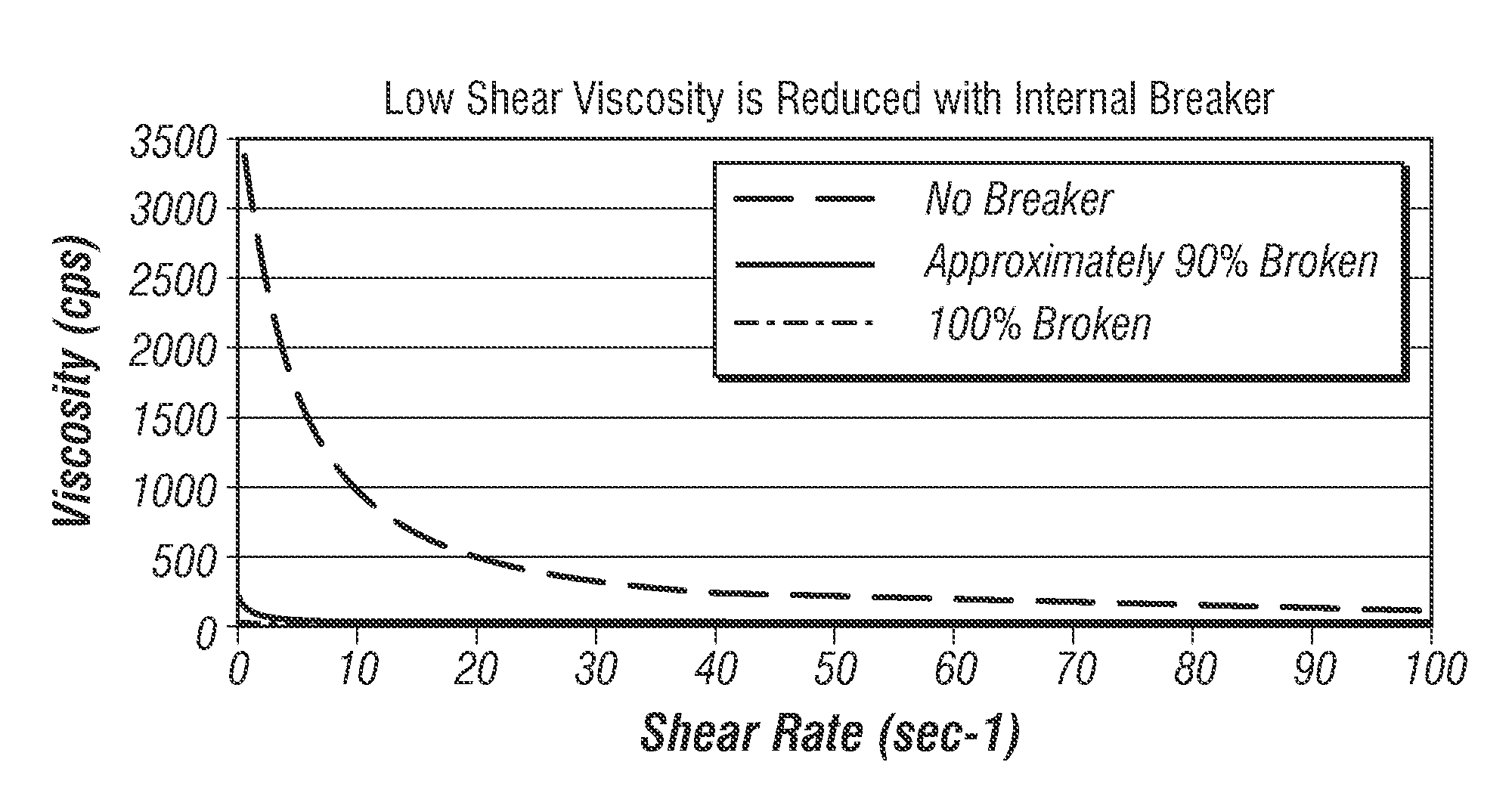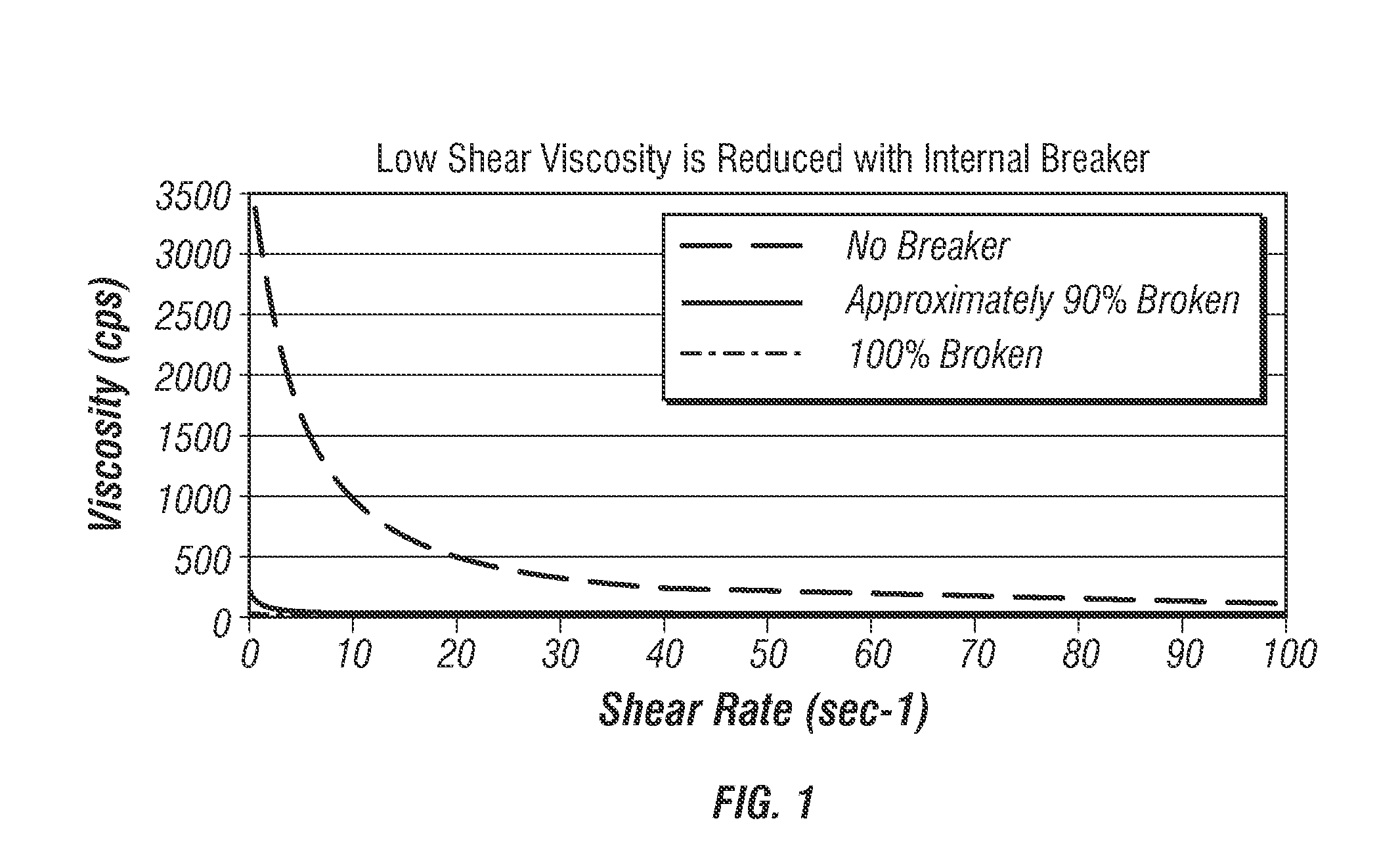Methods of using viscoeleastic surfactant gelled fluids to pre-saturate underground formations
- Summary
- Abstract
- Description
- Claims
- Application Information
AI Technical Summary
Benefits of technology
Problems solved by technology
Method used
Image
Examples
example 1
[0066]FIG. 1 is a graph of viscosity as a function of shear rate for tests with a 7% KCl brine fluid having 4% by volume (bv) WG-3L VES (AROMOX® APA-T from Akzo Nobel) at 150° F. (66° C.) without a breaker and then with 3.0 GBW-407L gptg fish oil breaker available from Baker Oil Tools, the latter two curves showing approximately 90% broken and 100% broken states. It may thus be seen that fish oil may be an effective and complete internal breaker for use in the aqueous viscoelastic treating fluids herein.
example 2
[0067]FIG. 2 is a graph of viscosity (left vertical axis) and shear rate (right vertical axis) as a function of time for the indicated fluid at 150° F. (66° C.). This fluid contains 13.0 pounds per gallon (ppg) (1.6 kg / liter) of CaCl2 / CaBr2 brine and 4% by WG-3L VES at 150° F. (66° C.), with 6 pounds per thousand gallons (pptg) (0.7 kg / m3) ZnO viscosity enhancer and 2 gallon per thousand gallon (gptg) (any volume units may be substituted for this value) of fish oil breaker. The FIG. 2 graph demonstrates very high static and low shear rate viscosity of this VES fluid.
example 3
[0068]FIG. 3 is a graph of viscosity both before and after the viscosity break (left vertical axis), and shear rate (right vertical axis) as a function of time for the same fluid of Example 2 at 250° F. (121° C.). This lab test demonstrated very high static and low shear rate viscosity of the VES fluid before being broken and very low viscosity after being broken.
PUM
 Login to View More
Login to View More Abstract
Description
Claims
Application Information
 Login to View More
Login to View More - R&D
- Intellectual Property
- Life Sciences
- Materials
- Tech Scout
- Unparalleled Data Quality
- Higher Quality Content
- 60% Fewer Hallucinations
Browse by: Latest US Patents, China's latest patents, Technical Efficacy Thesaurus, Application Domain, Technology Topic, Popular Technical Reports.
© 2025 PatSnap. All rights reserved.Legal|Privacy policy|Modern Slavery Act Transparency Statement|Sitemap|About US| Contact US: help@patsnap.com



